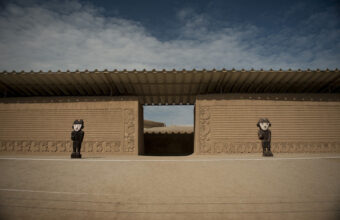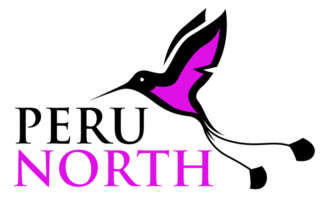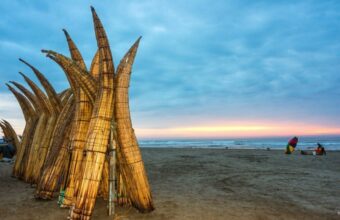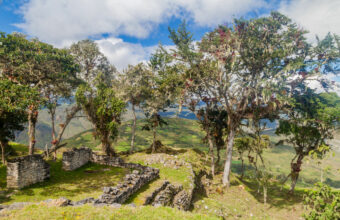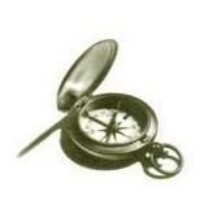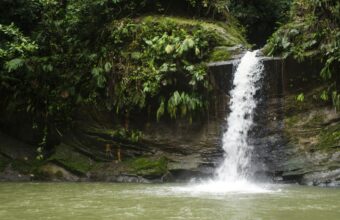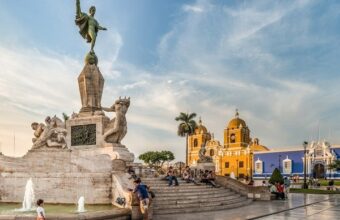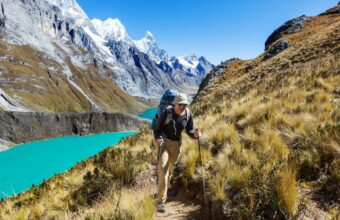How To Get To Chavín De Huántar
Ground zero for Peru's first religious cult
“The birthplace of South American culture” — such was the great Peruvian archaeologist Julio C. Tello’s epithet for Chavín de Huántar. Time may have qualified his judgment, but it’s done nothing to alter its basic rightness.
Chavín de Huántar was built by the Chavín people, a prehistoric Andean culture that takes its name from the site and that flourished between 900 and 200 BC. Most archaeologists believe the site was constructed in two stages: the so-called Old Temple took shape from 1,000 to 500 BC, while the adjoining New Temple was added between 500 and 200 BC.
The resultant complex was in its day the most important pilgrimage destination in the Andes: worshippers would travel thousands of miles to participate in its sacred rituals and consult its oracle.
Meanwhile, Chavín textiles, metalwork, and ceramics served to spread the monotheistic cult of a bizarre fanged deity throughout Peru.

Chavín, One of the most important pilgrimage destinations in pre-Colombian Peru
How to get to Chavín De Huántar
Chavín de Huántar is situated in Peru’s Cordillera Blanca, some 160 miles north of Lima, in a fertile valley near the confluence of the Mosna and Huanchecsa rivers. The area is flanked by green and grey hills, with snowy Mount Huantsán in the distance.
The Chavín ruins are not especially impressive at first glance. Most are greatly deteriorated, owing to their extreme antiquity, and the whole front façade of the temple is heavily corroded by landslides, tomb raiders, and villagers (the latter pilfered its stones to build their houses, sometimes right on the complex’s grounds).
Yet as one gets closer, one senses the place’s uncanny spiritual presence. The first sight upon arrival is a vast sunken courtyard, grass-covered and flanked by platforms. Next comes the grey-brown sandstone face of the New Temple, with its columned portal and protective scaffolding. Finally, continuing to the right, one arrives at the Old Temple, with another sunken courtyard. Not much to look at — but the true payoff is inside.
The Chavín de Huántar site
From close up, Chavín de Huántar’s hybrid nature reveals itself. Like Caral and other cities of the coast, it features a massive shrine in the form of an inverted U, with the New and Old Temples as the left and right prongs. Also like Caral, it has a sunken circular courtyard that probably served as a fire pit for sacrifices and open-air rituals. But a deeper parallel lies within — in its subterranean passageways.
These passageways are creepy enough for us today; one can only imagine what they must have been like for acolytes of the Chavín cult. Winding labyrinths, carved air shafts, dank underground galleries: the bowels of this archaic cellar are the stuff of nightmares. More macabre still, at its centre lies the Lanzón, a leering, 15-foot statue of a malevolent feline deity that was the object of the Chavín people’s worship. The current interpretation holds it represented the dark power of the life force — profoundly sacred for Andean people.
The other half of Chavín’s dual nature appears outside, in its iconography. Serpents and caimans, jaguars and monkeys: the carvings on the walls make clear the influence of Amazonian art and shamanism. This hybridism is unsurprising, given Chavín’s location exactly midway between Peru’s coasts and the jungle. By a strange irony of history, the mother culture of the Andes sprang from the region’s desert lowlands and humid tropics.
The New Temple also has galleries and plazas in its interior, but not all of them are currently open to the public.
What to see at Chavín de Huántar
Key features to look for at Chavín de Huántar include the following:
Tenon heads: At one time, the exterior walls of the complex were covered with grotesque stone heads representing the fanged deity of its religious cult. Unfortunately, only one is still in place: look for it along the New Temple’s back wall.
Psychedelic carvings: The plaza sports carvings of men transforming themselves into jaguars. Frequently they are holding the San Pedro cactus, a mescaline-based hallucinogen used in Chavín’s shamanistic rituals.
Water channels: Underneath Chavín’s courtyards run several miles of underground conduits. Scholars speculate the sound of rushing water was part of a shock-and-awe spectacle that heightened the religious experience in the temples.
Black and white portal: At the entrance to the New Temple is a portal with a stone lintel. Look closely at the columns: they’re covered with mythological figures.
The history of Chavín de Huántar
Chavín de Huántar was ground zero for the Andes’ first religious cult. As reconstructed by archaeologists, the cult’s rituals went as follows:
First, participants would use nose tubes to snuff up hallucinogenic drugs made from the San Pedro cactus. Next, they would follow priests into the temple labyrinths, where their senses would be overwhelmed by the darkness and the bellowing of conch shells. Finally, they would encounter the Lanzón, the primal god himself — an overwhelming vision that served to reinforce the power of the priests who ruled Chavín.
In this way evolved a powerful system of social control that paved the path for two thousand years of Andean spirituality.
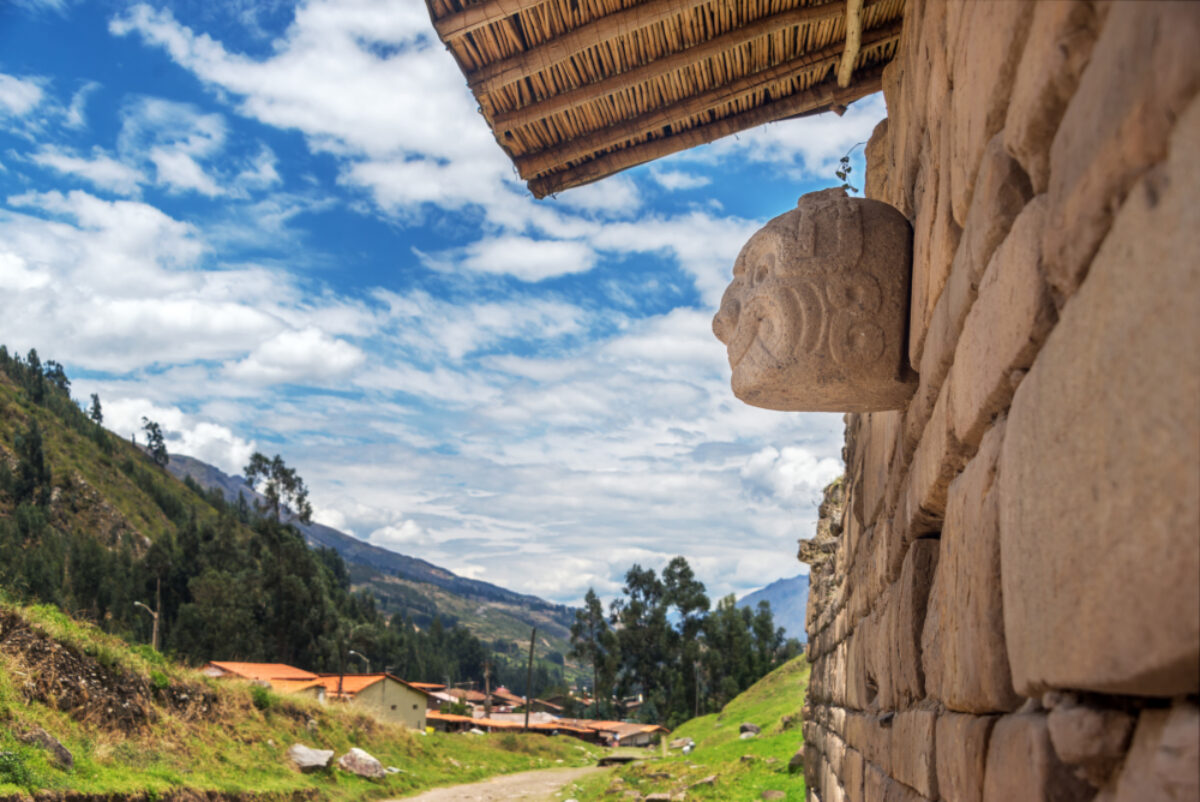
Chavín culture
Chavín culture flourished in and around the Huántar sanctuary in the so-called Early Horizon period (900 to 200 BC). During this time, the town was successively occupied by at least three distinct groups, and grew into a quasi-urban centre with a bustling handicrafts industry. It declined sometime in the second century BC, possibly due to its lack of state apparatus to guarantee long-term stability.
The artistic work of the Chavín is more stylised than that of later Peruvian cultures like the Moche and Nazca, making it harder for archaeologists to get a true picture of what everyday life was like in Chavín de Huántar. However, there is evidence (from the architectural treasure that is ancient rubbish dumps) that the Chavín developed agricultural practices, with corn a staple and squash, avocado and other crops grown.
Chavín’s greatest achievement was its creation of the Andean religion. Scholars are still debating the exact nature of this cult — monotheistic vs polytheistic, animism vs personalism — but there’s no doubt as to its pervasiveness. By means of textiles and metal objects bearing religious imagery, the priests and artisans of Chavín laid the basis for a belief system that shapes Peruvian culture to this day.
How to get to Chavín de Huántar
Half a day should suffice to see the ruins; many visitors take day trips from Huaraz in the Cordillera Blanca. If you want to see the complex early in the morning and explore the site’s museum at your leisure, overnight stays at the mountain town of Chavín are highly recommended.
Local guides to the ruins are a step up from what you normally find in Peru; some day-trip leaders from Huaraz are quite knowledgeable. There’s also the excellent on-site Museo Nacional de Chavín, jointly sponsored by the Peruvian and Japanese governments, which contains many stelae (stone or wooden monuments) and artifacts of the complex.
Highlights include the missing tenon heads from the external walls; the Tello Obelisk, an intriguing pillar discovered by a local peasant; and the Stela Raimondi, a slab inscribed with uncanny religious images that can be read from two different directions.

